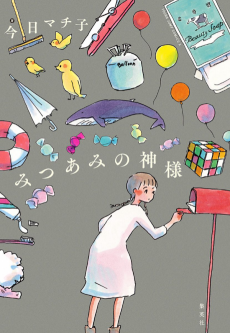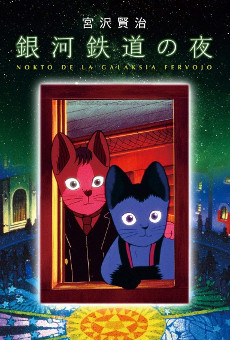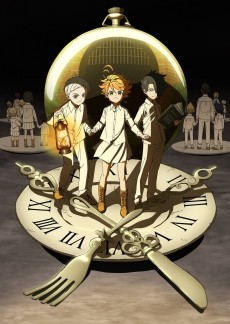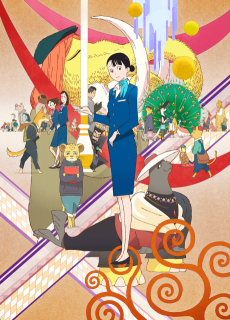MITSUAMI NO KAMISAMA
MOVIE
Dubbed
SOURCE
MANGA
RELEASE
October 24, 2015
LENGTH
28 min
DESCRIPTION
The earth shook. The sea roared. A far greater disaster followed. And then...
There is a small house solitary standing by the seaside. A pigtail-braided girl is living there alone since that day. Mail is no longer delivered, but even this morning she's hanging out the laundry as usual. She's unaware that all around her, the clothes-pegs are quarreling, the pillow argues with the umbrella about the outside world, and the new toothbrush is unsuccessfully trying to be polite with the silent, old ones.
Do things exist to be used until they are consumed or broken? Are they afraid of being thrown away once their life cycle is complete?
(Source: Production I.G)
RELATED TO MITSUAMI NO KAMISAMA
REVIEWS

Judhill
30/100Recipient of a bounty of accolades from film festivals, victor of my on-sight seething: Utilitarianism in full force.Continue on AniList(This review contains spoilers for the entirety of the short film.)
What we have excreted from an institution housing prudent and well-meaning talent such as Production I.G and lauded by many of the film festivals it was submitted to is a terrible quasi-utilitarian short film that vilifies people for transgressing against a social contract wherein the rudimentary supplements for sustainable life—indeed, never does the film suggest that the girl living in the middle of remote-nowhere thrives off privilege or luxury—come at the cost of your very organs. Stop and think about the film's message and the way it handles it: The ordinarily inanimate objects who, for the purposes of desensitizing the viewer to a homeopathic presentation of the film's themes, are provided the excellence of speech and intelligence that us viewers can parse for ourselves and empathize with. The film introduces us to its moral landscape by beginning with a physical spat between clips of differing colors, sprouting from libelous exchanges across the clothing they embed, developing into a full-blown battle against each other leading to their separation to individual “clips” broken down to the coil, and comically ending with the girl's mending of them by connecting their separate parts—separate by color or limb—to one another to supersede her now-destroyed batch of clips and proceed with her clippings. Notice my usage of the adverb “comically” prior to that final clause and recall to mind that comma-clipped insertion in the sentence following that colon mark. Have you now reached the cave where my breadcrumbs trail?
Before I dig my heels down this film any more than I already have, let us first remind ourselves of its title: Pigtails, that innocuous string of eight letters arranged for international release that, when serving as its crown for promotional material, engenders a sweet frailness within our hearts and deceives it with a supposed innocence. What of its Japanese title? Mitsuami no Kami-sama, of which a literal translation on the Wikipedia page spells out “God with the Braided Pigtail Hair.” It isn’t as poetic or concise as Pigtails can be, nor does it fit well with the minimalist aesthetic bound to be many of its audience's first exposure to it, but it does grant us a single thread which we can pursue in its thematic fineries: that being its description of the female lead as a “God” (“神様” or “kamisama” in Japanese). This word is essentially the cement to which we are ascribe the role of deity to those above our planar perspectives, and its manifestations in the film can be seen in the relationship between the objects and the Pigtails Girl as well as the Pigtails Girl and the government whose scientists periodically maintain her health in preparation for their eventual dissection of her, while also supplementing us with the lenses through which we can reason out its animistic personification of the objects. The Goddess of Pigtails exercises her control over the Talking Clips by mending them by means of connection of one white leg to its red counterpart. Likewise, the Pigtailed-Girl herself shall, when her time of “expiration” comes about, be dismembered by the authorities for the sake of bringing happiness or rejuvenating life to several other people in need of her organs. We are to first laugh over the irony of the former before straining ourselves over the utility of the latter.
Whenever the film cares to hammer down the girl’s desire to seize happiness for herself, it must negate that humanity with an ever-waning, unethical philosophy that comes outside of her own autonomy as an individual and citizen within the country. Since telling this story outside of flimsy animism would conjure up a nightmare of a facility that breeds the invalidation of one’s own rights for the sake of supposedly “hard-earned” cash, we see the spans of this decrepit exploitation through the homeopathic lenses of its objects. These talking puppets become the sole groundwork for which we can derive and apply much of our interpretation of the film: Our female lead finds the comfort she needs through the recollection of memories dear to her heart, whether it be her parents’ toothbrushes she keeps in spite of their owners demise or her acquisition of a stray balloon stirring the white vignettes of a day whose clouds were permeated by the flight of released balloons. Whereas the mailman has sprung newfound happiness within her, these objects bring about happiness driven by the comfort of the past. Yet, this steel conviction comes without prudence: A radio is rebuked by an umbrella and a pillow for meaning to tell of the terrifying truths that plague the world as it is, but it soon appeases the two when, brought by the mailman to the girl’s bed, it broadcasts a song that sends a string-strum melody and honey-sweet mellifluousness down to the comfort and protection they provide themselves. If you find this to be anything besides a strengthening of the biases that have envenomed us for centuries, then you have successfully fallen for the trap of Ichiko Aoba’s lovely composition, which had initially tempted even me, and you have forsaken information for the bliss of ignorance.
Moreover, when the truth of Pigtailed-Girl’s reality is told to us by the red balloon brought from the outskirts of the walls, interspersed with the mailman’s discovery of a surgical severing and disembowelment of one of these victims, we piece together the governing principle within this facility: one that champions the maximization of happiness and well-being of the involved parties, brought to you most notably by that Mill whose eloquence is far beneath that of Milton’s. We do not see a well-constructed debate in this scene, only a brief sequence of exposition by the refugee ballon followed by a proposal for conformity by a worn-down teddy bear. Its lack of substance is precisely why it allows the swift and jarring transition from conformity to transgression in the following scene, where even the teddy bear who found a pragmatism in utilitarianism urges the Pigtailed-Girl to run for her life. At this point, it comes as no surprise that the instilling of sentience into these objects has worked its way towards the path antithetical to an affirmation thereof. Though the transmission of material now useless in its current apparatus to a newer one may be deemed sustainable, the contextualization of these ideas through literal sentience puts into question the ethicality of the deed. Utilitarianism as a philosophy doesn’t work in any functional society because it eradicates the bodily autonomy one may have over oneself while allowing itself to be justified by the often-exploitative social contract which demands the individual be stripped of certain expenditures of their self shall they wish to live under a certain society. Why is it that the mailman and the janitor who cleans his room do not know of the dissections until the former spies on one of such procedures? Simply because parading such to the public would bombard the government with scrutiny among the masses. The film proposes to us a society in which the upper class can pay for the organs of those more unfortunate than them, all for the sake of its prosperity which is literally capitalism. So much for maximizing good with the least amount of harm.
If you still find yourself unpersuaded by my claims, you need only replay the scene in which the girl feigns her inclusion with the boy to that world outside the walls that have barricaded her from freedom for so long. Why, upon letting go of her hand, does the boy become distraught and the film cut to downward shot of her body falling, of whom its surroundings are momentarily transposed by a spatial nothingness soon becoming occupied by a clutter of fresh, clean, and new objects all suspended in time, then disrupted by the sound of the ladder hitting the ground, damning us by the sight of her white dress surrounded by the disordered mess of shattered, disposed, and old objects. She revolts against the objects conditioned to serve her under subsidiary, inanimate roles; she appeases to the government that violates the autonomy of another person to maximize utility—she becomes an “object.” Why do you think that the film never shows us the verbalized thoughts of the objects when she returns to her house, that cage binding her to her one purpose in life, besides that of the red balloon having loomed from the other side? Where balloons had once been the stimulus reigniting memories of former happiness, they have now become the symbol whose happiness she must protect. Our protagonist’s maturation comes from her rejection of that which would have soothed her humanity, love and happiness, for the sake of the oppressive and exploitative “common good,” diluted through the shreds of propaganda and mass manipulation. Forever holding the white vignettes of her childhood, she chooses to stay inside the cave.
SIMILAR ANIMES YOU MAY LIKE
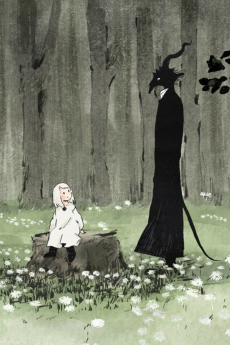 OVA FantasyTotsukuni no Shoujo
OVA FantasyTotsukuni no Shoujo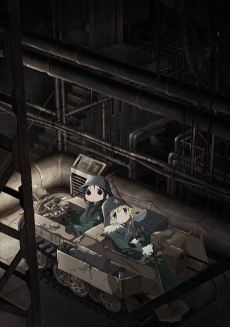 ANIME AdventureShoujo Shuumatsu Ryokou
ANIME AdventureShoujo Shuumatsu Ryokou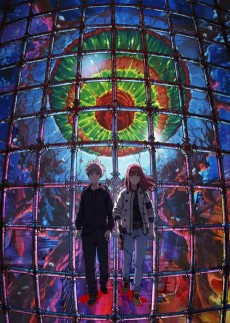 ANIME AdventureTengoku Daimakyou
ANIME AdventureTengoku Daimakyou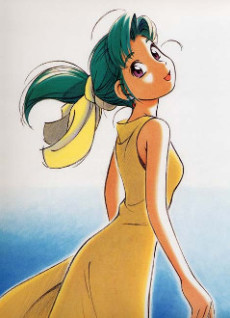 OVA Sci-FiYokohama Kaidashi Kikou
OVA Sci-FiYokohama Kaidashi Kikou
SCORE
- (3.25/5)
TRAILER
MORE INFO
Ended inOctober 24, 2015
Main Studio Production I.G
Favorited by 12 Users

